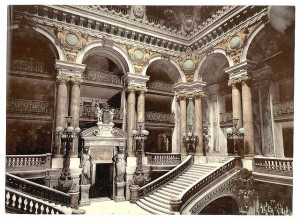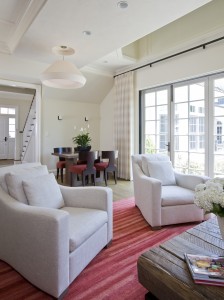I love the Opera. The intensity, the grandeur, the music, the sets, the costumes, the drama; and the Diva, around which many a story line is centered. The adoring public awaits her entrance, yearning for the moment she transports us from heights of pleasure to the depths of despair. The Diva transfixes us and after that, nothing is ever the same; especially if she cracks on a high note.
Opera is often about pomp and circumstance and it’s no surprise that the spectacle offstage at the Opera House can be equally dramatic.

The Opéra Garnier in Paris; is the stair for the space or the space for the stair?





